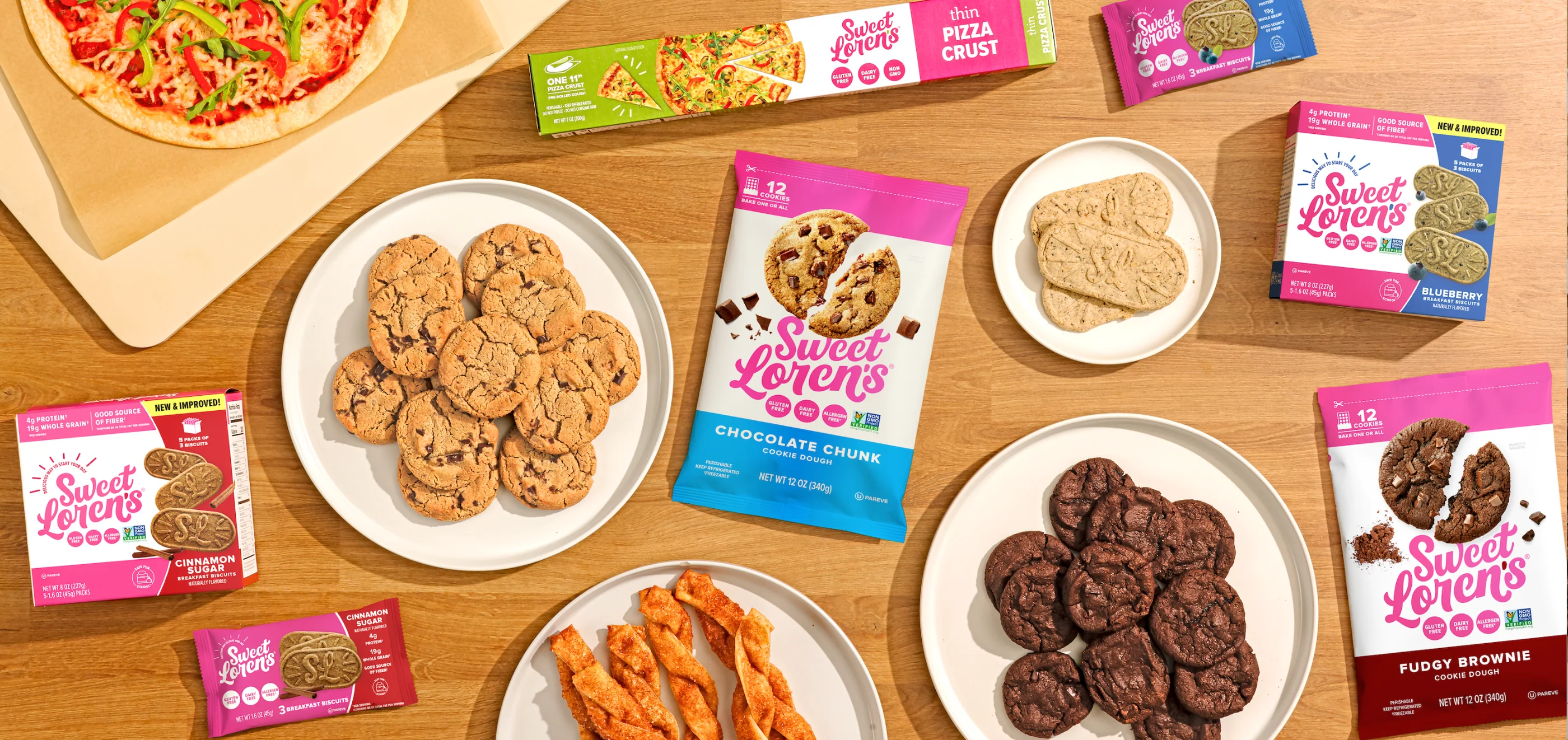By clicking “Accept”, you agree to the storing of cookies on your device to enhance site navigation, analyze site usage, and assist in our marketing efforts. View our Privacy Policy for more information.
Mindset Shift: Ecommerce Brands Need CRM To Survive
Email marketing remains one of the most effective marketing tools for ecommerce brands. That’s why the top 100 Shopify stores send an average of almost 10 emails each month.
That certainly doesn’t mean they’re sending to their entire contact list 10 times monthly...they’re segmenting and they’re personalizing. But that doesn’t mean that they have built the perfect email marketing program.

In fact, by making a mindset shift and adjusting the way they think about it, by no longer thinking of it as an email marketing program and instead thinking of it as a CRM-based approach, they have a lot of room to grow.
And through this CRM-based approach, email (which is a key piece to your CRM program) should be a top 3 revenue generator, easily bringing in around 20% of revenue.
But it goes beyond supercharging email.
A CRM-based approach can leverage a host of channels, including email, SMS, loyalty programs, customer service, chats, and direct mail to help ecommerce businesses create and scale personalized experiences.
What is CRM?
CRM is an acronym meaning customer relationship management.
It can be a ‘what’ or a ‘how,’ a tool or a strategy. For us, it is the latter: it’s a strategy, a mindset and a method that goes beyond just tools.
As the name states, it’s all about building a relationship with your customers.
It’s more traditionally found in sales organizations as a way to capture details of a customer & their time interacting with your brand, from when they were a lead, through all their purchases, all their conversations with your support team, your account team, and so on and so forth.
And that’s why we believe it’s time that more brands start thinking about eCRM (CRM for ecommerce). It's an effective strategy to understand how your customers are interacting with your brand, and more-so, how you can improve that experience.
Once you embrace the mindset, the next steps are to focus on data collection, analysis and application...application in emails, in the texts you send, and across all the touchpoints that you can control & personalize.

A CRM mindset goes a step beyond segmenting emails solely based on how often subscribers open your emails or what types of products they’ve purchased (both great segments to keep in mind, but that shouldn’t be the end-all-be-all).
CRM takes into account so many more data points, and forces you to reframe the way you are looking at your contacts...it is no longer all about your email list...these are people, they’re customers...it’s about the relationship, the experience.
And as an agency that focuses on building meaningful connections between brands and their customers, we know the power of shifting this mindset.
Are You Listening?
By now you’ve likely seen the power of email automations. We usually see open rates about 2-3 times higher for automations than email campaigns. We also see a click rate up to 4 times as high.
That’s a significant difference.
And the reason is that email automations are based on the user & their actions. Automations are behaviorally triggered, and get the right message to the right person at the right time...the time that is most relevant to them because it was caused by an action that they took.
Campaigns, on the other hand, get the message you want out to the people you select at the time you choose. They are still a super important part of your marketing strategy, but you’ll almost never see the success from a campaign that you would from a well-done automation.
But how do you scale your automations to extend beyond email, and to extend beyond an automated welcome when someone joins your list? How do you grow relationships with your customers at scale?
It just depends on how much you’re listening.
Think of it like a conversation.
You don’t talk to someone and both just say totally unrelated things at each other. One person speaks, the other listens and responds, and it goes back and forth.
The way you speak to your customers is through your marketing. The way they speak to you is through their actions. And, after all, actions speak louder than words, right?
So the question is, are you listening?
Data Meets Empathy
The way you listen is through data analysis.
It’s mapping out the user journey, mapping out the customer lifetime, and then overlaying the behavioral data of your customers.
We find it’s best to break your customer group into segments for this analysis, usually starting with an RFM analysis to figure out which are your top customers, which are average, and which are underperforming.
The other great way that we often start with this analysis is with personas and splitting those out to see how behavior compares between different ones.

Once you start to see the inflection points in a customer’s lifetime experience with you, in their relationship with you, you can identify key points to try to influence.
Let’s say you see a notable drop in subscription retention at month 5. Then we need to increase the positive experiences shortly before they reach this critical point.
Or maybe you know that the best customers purchase every 93 days. Well then around day 80 (depending on the buying cycle, price point, and decision timeline for buying your product...all identifiable through data analysis) we need to start communicating with past purchasers and warm them up to make another purchase, putting products in front of them that they’re most likely to want or are most likely to improve their experience with what they’ve already purchased.
The key is, it can’t just be numbers. You have to combine this data with empathy. Because a number in a vacuum is just a number. It doesn’t tell a story. It has no context. It isn’t a living thing.
But it can indicate to you that something important happens. And then you dive deep to figure out what is so critical there to a person, to this person.
How? Through testing, through customer interviews, through reading support logs or search queries, through reading reviews. It can be as impersonal or as personal as you have the time, energy & opportunity for.
Conversations Go Two Ways
Listening goes beyond identifying buying trends.
We’re taught to do active listening in real conversations, and you should do the same thing with your customers.
Create opportunities for them to tell you who they are and what they care about. Again, they’ll be telling you with actions not with words, but you have to give them that opportunity and you have to be listening.
If someone visits your FAQ page, guess what: they have a question.
If someone reads a blog about your carbon footprint or sustainability practices then they likely care about sustainability.
And knowing this will help you evolve your marketing efforts into opportunities to talk to them about the things that matter to them. These are chances for you to build the relationship. These are chances for you to leverage behaviorally-triggered automations to ensure they are getting the answer they need, to ensure they are fully understanding all you do to be a sustainable brand, etc., etc.
How is This Scalable?
Now, the reason that CRM is traditionally used in sales organizations is because it allows you to have a one-to-one relationship at a scalable level.
For eCRM, we aren’t really getting down to a one-to-one level, but it will feel like that to the customer. They will feel heard. They will feel understood.
While eCRM isn’t truly one-to-one, we’re able to scale customer relationship management because people follow consistent trends. Whether it's by interest, persona, or by RFM quartile, people behave in similar ways.
So the value of eCRM isn’t in trying to get to a one-to-one relationship and dialogue with every individual customer, but rather in better understanding some customers so you can best serve them and all the other customers like them.
The key part that takes this approach beyond email marketing is that with a CRM approach, you are considering many more touch points (and data sources) than just your email platform.
You’re combining data from your website, your email marketing, your loyalty program, customer service, and your other sales & marketing channels.
Whether you’re using a customer data platform (CDP) or not, you can start to bring in a lot more data points to understand where people are in their buyer’s journey & to understand how you can best serve them and communicate with them.
Oftentimes we find that you don’t actually need a formal CRM platform.
A lot of our clients are on Shopify or Shopify Plus, and effectively use Klaviyo as their CRM. These two platforms work in amazing ways together, and Klaviyo has a ton of integrations that allow it to serve as a tremendous eCRM platform.
Klaviyo is able to fill this role because of its open API, so you can pipe in profile properties & event data to someone’s profile, and then create custom-triggered automations based on those properties/events. These automations can be emails, SMS or push notifications. It also passes info to other key platforms like Shopify, Attentive, or Facebook Ads Manager.

The more touch points you can leverage, the more you can fuel this CRM approach. Maybe you use HelpScout for a customer service platform. Well that integrates with Klaviyo, so you can trigger an automation to fire anytime someone opens up a help ticket. Or maybe you trigger it 48 hours afterwards to follow up and make sure that their problem was taken care of.
The bottom line is that CRM scales by increasing the data points and channels you can connect together, and increasing your ability to build a cohesive marketing approach across these channels like email, SMS or push notifications.
It scales by thinking through inflection points and automating messages around them.
And this scales by allowing you to better segment and personalize your marketing messages to your customers.
All of this is possible through deliberately thinking through data capture, analysis and platform integration. With this CRM approach, you will be able to build remarkable experiences for your customers, foster meaningful relationships between them and your brand, and grow your bottom line.
Posted on
April 28, 2021
Interested in collaborating on a project?
Get StartedLatest Updates

Bringing a Cohesive Holiday Experience to the McCormick Shop
News

Anthony’s Goods Grows Revenue 22% With New Site and Media Strategy by Barrel and WITHIN
News

Inspiring Mealtime Creativity With Cabot’s New Recipe Experience
News

Bringing Sweet Loren’s Joyful Rebel Brand to Life Online
News

GEO: The Next Frontier for CPG Brands in the Age of AI Search
Insights

Fueling while on earth's Growth with Christian McCaffrey On Board
News

How We Leveraged User Testing to Redesign McCormick’s Recipe Experience
News

Khloud Expands Its Product Line With Single-Serve Popcorn Packs
News

.jpeg)
